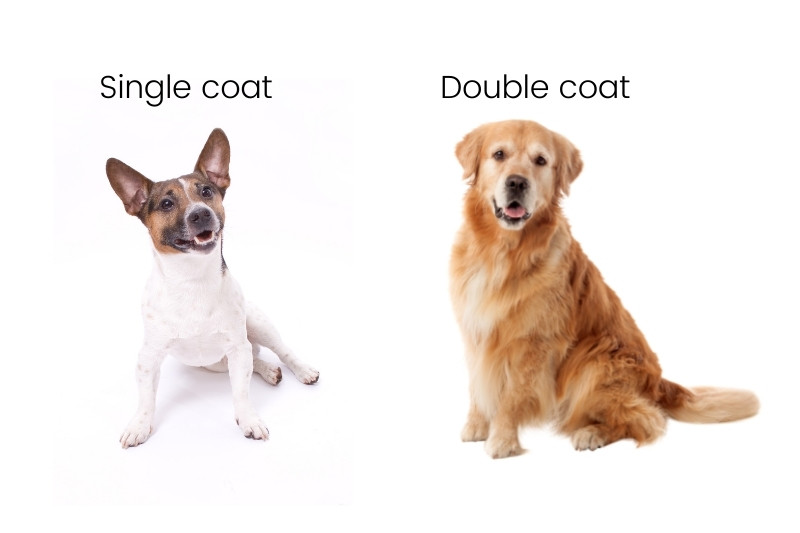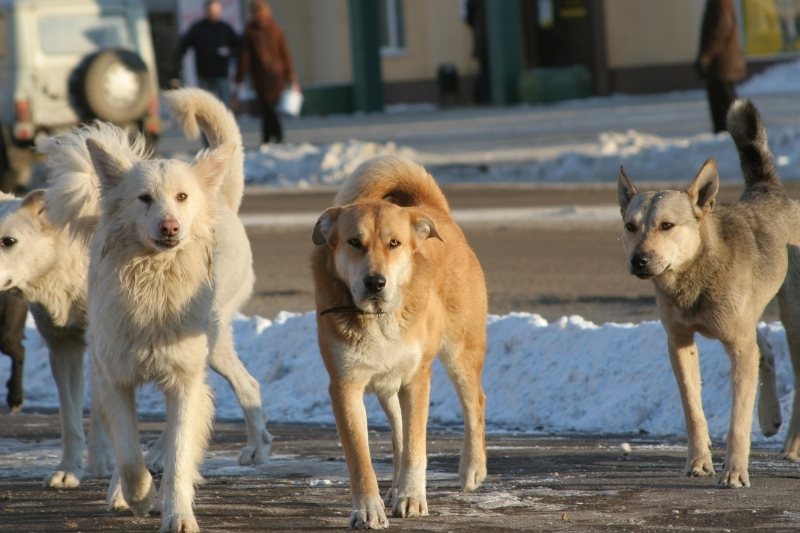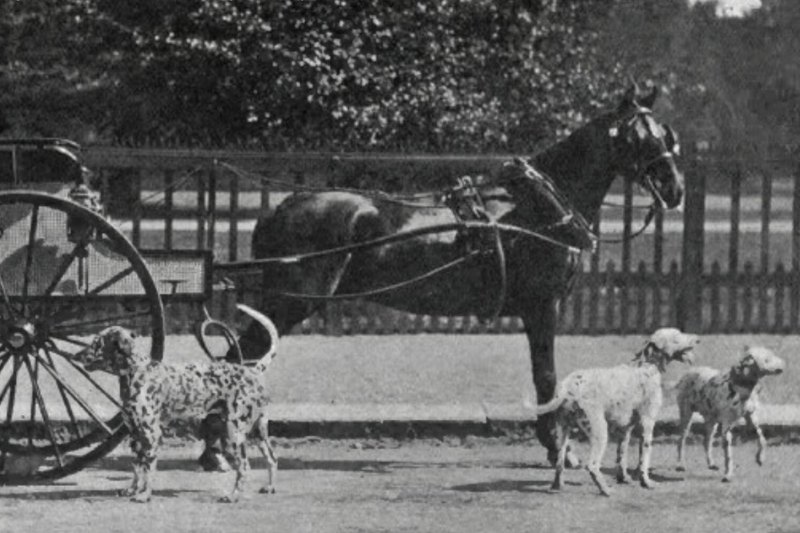Single Coat vs. Double Coated Dog Breeds

A single-coated dog or double-coated dog can make quite a big difference in the dog world. It may be the ultimate decision whether you buy a certain dog or not. After all, grooming, maintenance, and your health can change dramatically because of a layer's difference.
As a potential dog owner, you must know the essentials about single or double coats. This criteria is equally as important as their temperament, health, and the rest of their appearance.
Therefore, keep reading to know more about single-coated dogs and double-coated dogs.
What is a Double Coat?
A double coat has two layers of different textures. The first layer of this dog's coat is dense, consisting of fine or short hairs that feel like wool. Typically their undercoat helps keep their essential organs warm in chilling winter temperatures.
These coats also protect the dog's skin in the summer, preventing it from getting sunburnt and stopping them from being bit by insects. Then their outer coat is often longer with more coarse hair designed to repel bugs, dust, dirt, and debris.
How to know if your dog has a double coat?
If you're not sure if your canine has a double coat, the easiest way to identify is to do the following:
- Slowly and gently lift your dog's hair back.
- Look and see if their outer coat goes through to the skin.
- If you notice a variation at the skin's surface, especially if the coat looks to have a woolly texture and is soft, then that's a sign it's a double-coated dog.
Depending on the breed, you might need to look a bit closer. Often some breeds have a dense undercoat, plus their coat length and texture vary.
Double coated dogs
Double coats are very common in dogs; you might just know a few breeds that have them. To give you an idea, here are some of the most common ones:
- Labrador
- Huskies
- German Shepherds
- Golden Retrievers
- Border Collies
- The Great Pyrenees
- Alaskan Husky
- Australian Shepherd
What is a single coat?
A single-coat dog is basically just a dog with one coat. As they only have one layer, their fur tends to be less fluffy than double-coated breeds. Single coated breeds can vary in terms of hair texture. Some single coats can be smooth, straight, wiry, curly, or silky. The type of single coat also influences their grooming requirements.
Single coated dogs
Some examples of single-coated dogs are the following:
- Poodle
- Jack Russel
- Daschunds
- Yorkshire Terriers
- Soft Coated Wheaten Terrier
- Maltese
Shedding
When looking at the double or single coat, it's important to know which has less shedding in advance.
Double coated dog
Double-coated dogs shed their undercoats at least twice a year between seasons. The most common reasons for this happen in spring and fall.
It generally lasts for 2-4 weeks at a time. Sometimes it can also be more, based on the breed you bring home. If you have a breed with a heavy double coat, you may also experience handfuls or clumps of hair in-between seasons.
Shedding for double-coated dogs is often referred to as a coat blow.
When a double-coated dog breed sheds, you won't need to rush to the groomer. All of the hair that's unwanted and not needed will fall out naturally on its own. In addition to their double coat, other factors like their breed and gender can influence how much dog hair they can shed.
Single coated dog
Most of the time, single coats shed less, making it a bit easier to own if you suffer from allergies. When they do shed, it's often very evenly over the year, making their coat easier to maintain and groom.
Grooming requirements
Now you have a bit of background about dog's coat and their shedding, it's important you also know about their grooming.
Grooming double coats
Dog coats that have two layers should be maintained quite regularly. Ideally, you'll want to get the following tools to help keep their coat in condition:
- Slicker brush: To use on thick and long hair that is matted
- Undercoat grooming rake: This helps remove dead dog hairs from the undercoat.
- Pin brush: This helps remove dead hairs from their topcoat
- Bristle brush: To help remove any mats and tangles
- Wide-tooth comb: To remove mats
You should aim to take dogs with double coats to a professional groomer every 6-8 weeks. Regarding how often you should bathe and brush double-coated dog breeds, it can vary based on what type of dog you own.
Generally, though, you should always use a wire or pin brush first to remove any stray hairs in the outer coat. This will also help remove any dirt and debris. You should use a grooming rate to brush the outer coat and remove tangles from their undercoat. When brushing your dog's coat, always make sure you do it gently, so you don't hurt their skin.
Grooming a single-coat dog
When grooming single-coated dogs, you should always groom their coat when they're wet. If they're dry, it might cause their coat to break.
Therefore you spray your dog's coat with water first before grooming. Compared to a double-coated dog, you might want to take them to a groomer quite frequently for clipping.
Pros and cons of each coat
If you've not bought a dog yet and are unsure of what coat to get, then to help you, here are some advantages and disadvantages of each coat.
Single coat dog breed
Here are the following pros and cons of dog breeds with a single coat:
Pros
- Low shedding dogs
- Better for allergy sufferers
- Shed evenly
- Easy to groom
Cons
- Difficult for certain dog breeds to live in a cold climate
- Single coated dog breeds are likely to mat
- Sometimes these dogs can be a bit difficult to groom in comparison to long-coated breeds
Double coated dog
With a double-coated dog, there are certain advantages and disadvantages, which are the following:
Pros
- They're usually big breeds and are affectionate
- Protects your dog in a range of different climates
- Keeps dogs warm during swimming
Cons
- Heavy shedders
- Can trigger allergies
- Requires regular brushing and maintenance
- The dirt easily gets trapped in their coat
So which is better?
There are slight differences when looking at single and double-coated dogs. The pros and cons you see in this article are not subject to every breed.
Therefore, it can be difficult to identify which type of coat is better, as other characteristics like temperament, activity level, and diet need to be considered. Note that sometimes genders, health issues, and breed type can influence how much a dog can shed.
If you're unsure which dog breeds to buy, visit single-coated dog breeds and double-coated ones. Spend time with the dogs and see how you respond to them, don't let their coat be the only deciding factor.

Alex Wrigley is a professional writer and blogger who loves travel, technology and dogs. She is originally from the UK but currently lives in Nepal with her three dogs: two pugs and a golden retriever.









